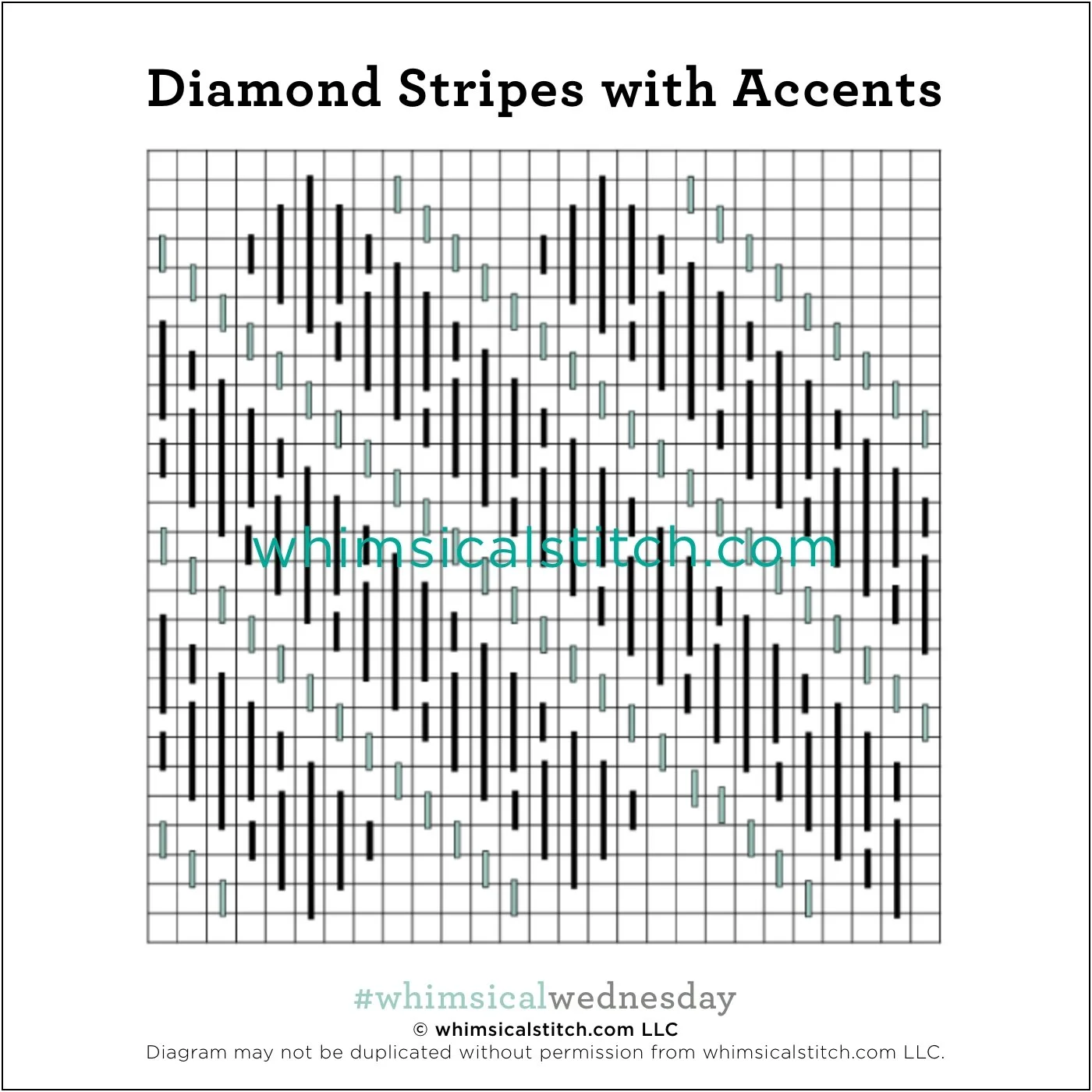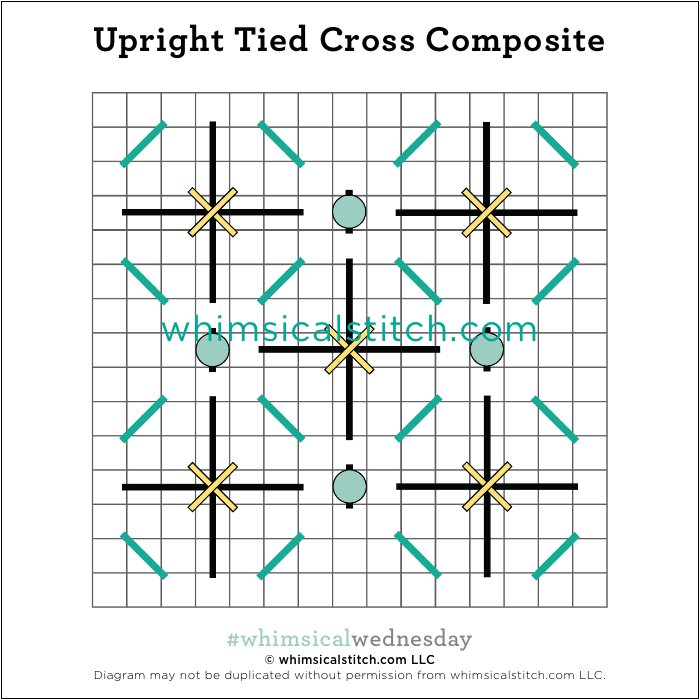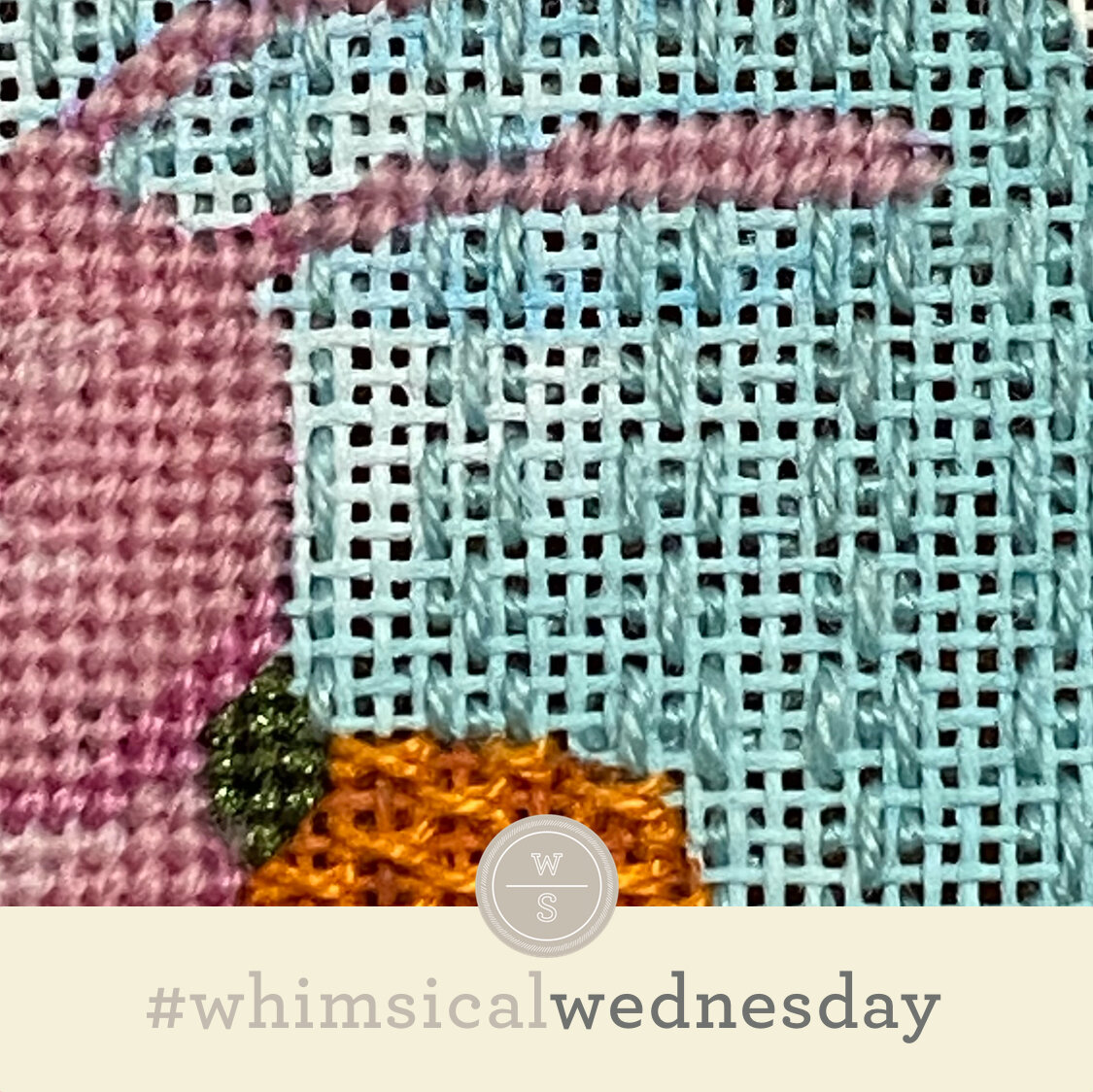Sorry for the radio silence the past couple of weeks. Life and a bit of travel got in the way. The good news is I have a cute stitch for today and two new small stitches to share with you on Sunday.
Meanwhile, welcome to my first blog post inspired by a Reddit post. (I’m still getting my head around the fact that needlepoint is on Reddit.)
The stitched sample is me playing with two strands of white Floche (black lines) and four plies of pink Splendor (aqua lines) on 13M. The skipped rows between the white and the pink threads are optional but I love how that little bit of space that makes the pink jump out a little bit more.
I look forward to using this stitch for a warm coat with buttons with Vineyard Silk (black lines) and Silk Lame 18 (aqua lines). I would flip the direction of the diagonal paths on either side of the center of the coat. Oh, and consider using felt balls for the buttons for an extra dash of cuteness!
I can’t stop thinking about candy canes for this stitch. So many possibilities. I would definitely eliminate the skipped rows. There are so many possibilities with accent colors and finishes! Red, white, and pink metallics. Pink and green metallics with white Floche. Pink and red metallics with white beads. So many choices.
There’s a lot of fun to be had here. I hope you have the perfect place for this stitch. Enjoy!
As you are auditioning stitches (from any stitch source), count the number of canvas threads on the diagram that match your mesh size. And there you have what an inch of the stitch will look like. Evaluate that against the area where you plan to use the stitch and make your final decision. If you start integrating this step into your stitch selection process, you may be surprised at how many stitches you think are large are much smaller than you realize.
By (sometimes) including this step in my own process, I find I am now integrating much longer stitches than I ever thought I would. I used to think a stitch six rows long was super big. I have very much changed my tune, which has helped me expand my creativity, especially for large-space stitches.
Today’s stitch diagram, along with all other #whimsicalwednesday and #smallspacesunday stitch diagrams, can also be found on a Pinterest board here. Be sure to follow whimsicalstitch.com on Facebook, Pinterest, Instagram, and Twitter.
If you like what you see on this blog, there's more. Mary’s Whimsical Stitches is a series of four books offering contemporary how-to collections of more than 200 stitches (in each volume) for all stitchers, regardless of skill level. All books include updated and sequenced diagrams from this blog, plus a collection of all-new stitches from private lessons and other class projects. Visit here to find a needlepoint retailer that carries my books.
New to needlepoint or looking for a refresher? Please download a handy how-to guide covering basic needlepoint stitches and stitch compensation techniques along with new top-line information on needlepoint materials and tools, how to handle threads, and other helpful needlepoint resources.
whimsicalstitch.com also sells Stitch Guides and Stitch Concepts for Melissa Shirley Designs, Zecca Designs, Sandra Gilmore, Purple Palm, Maggie, and Penny MacLeod, and many more. Click here to see the newest guides and click here to see the entire collection.
I hope you have the perfect spot for this stitch! Please enjoy! Have a wonderful #whimsicalwednesday!
A Note about Diagrams
I use color in diagrams to make them as clear as possible. The primary function of different colored lines is to illustrate a stitch sequence. For example, the layering of colors demonstrates you add them in that order. They can also provide ideas on integrating additional threads (one line for each color). Or, you can use the same thread for all color lines. That's where I encourage you to use your imagination for the space you are stitching!
















